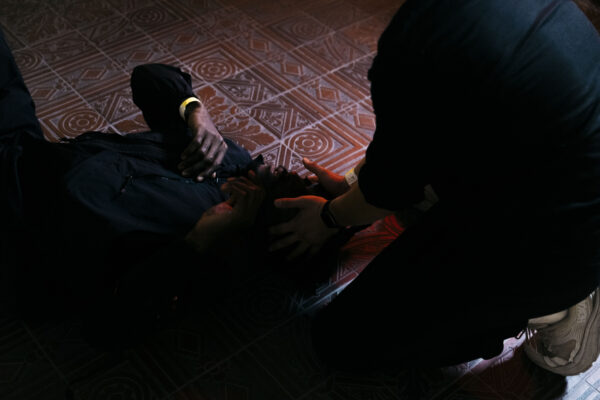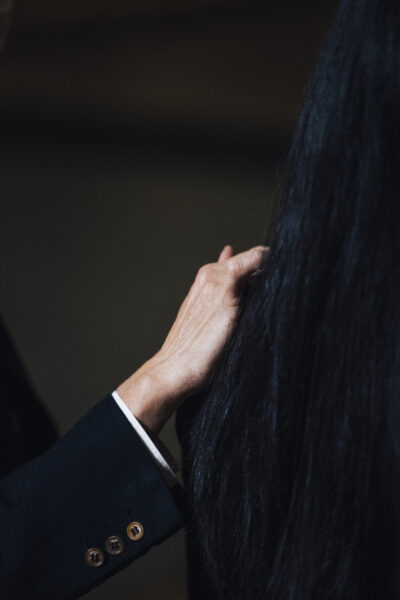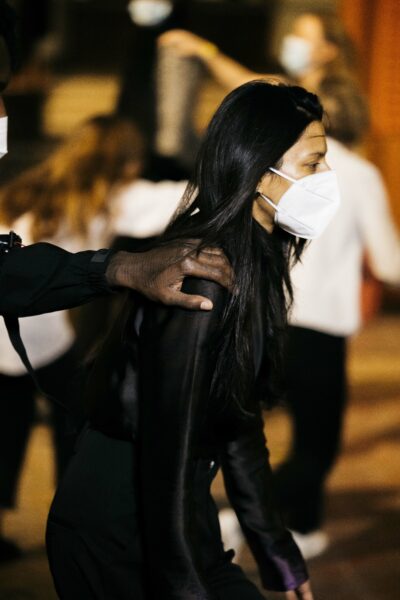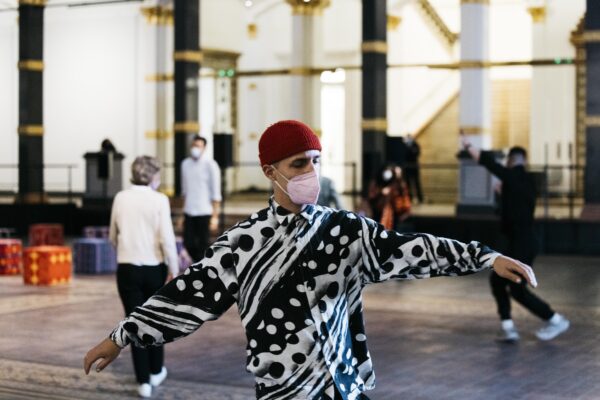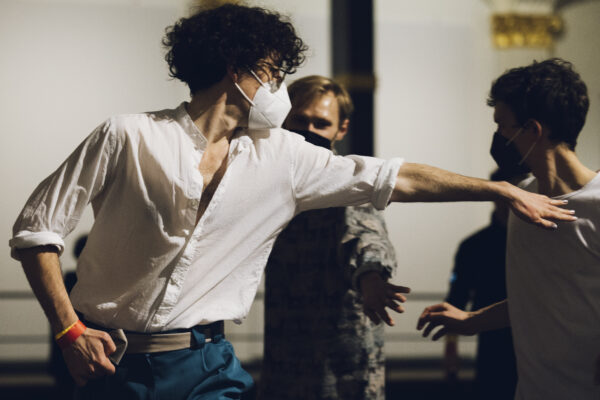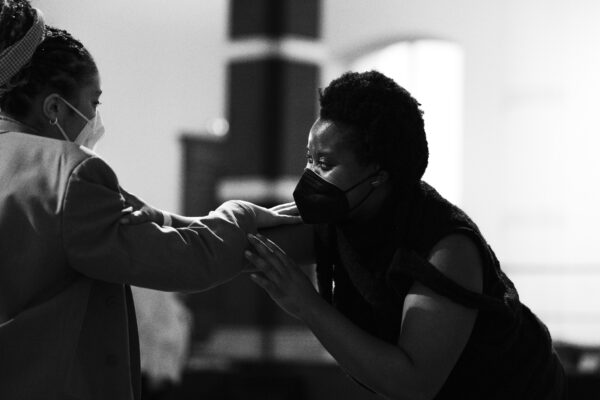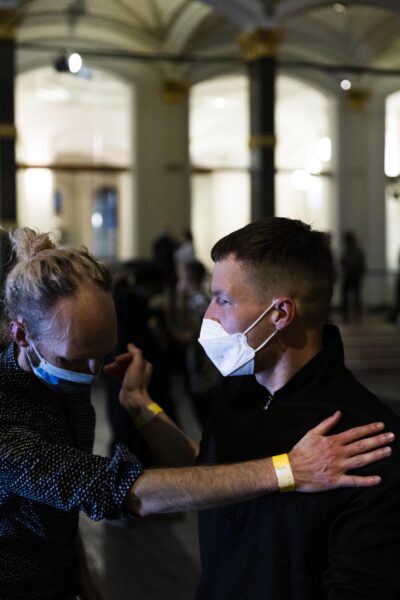In November 2021, we hosted a series of EightOS workshops in the context of Ama: Care, Repair, Healing exhibition at Martin Gropius Bau.
Our objective was to explore the topics of this exhibition through touch, inviting the participants to create a participatory immersive environment for embodied learning. Every day was planned around a specific concept that approached the main topics of the exhibition from a certain perspective. Together with NSDOS, we created a generative soundscape that used our own and the participants’ movements to change the sonic atmosphere in the space. This was the first time we tried our newly developed Tripod WiFi motion tracking sensors in a public setting.
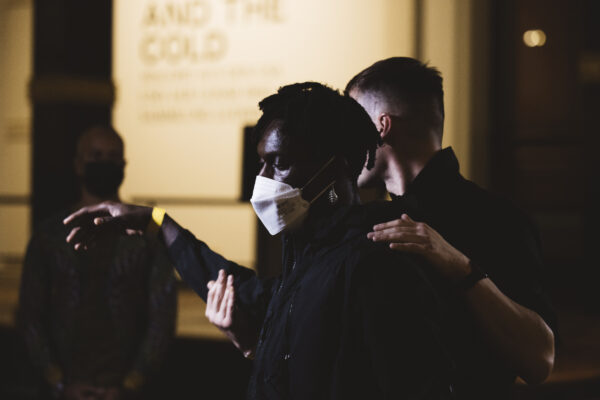
Our intention was to see how we can transmit ideas through physical interaction, experimenting with the concepts of care, repair, and healing — as well as the more general concepts, such as resilience and regeneration — on the level of a temporary collective body, in order get a “sense” of what they really mean in a tangible way.
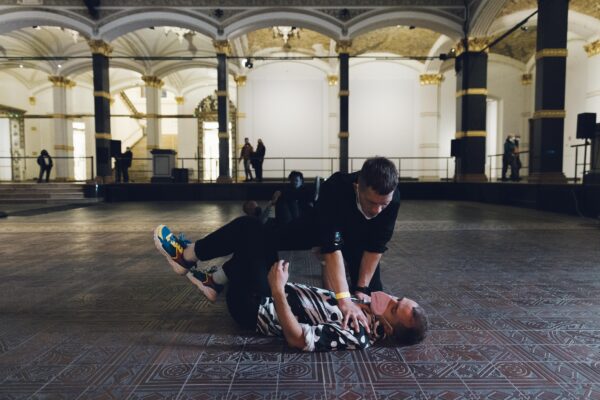
Part of the experience was to modulate difficult situations in order to research different strategies for dealing with those situations. The presence of motion tracking system added a presence of an objective entity to the process and helped us see how we could choreograph the dynamics of this process in a way that has high variability to stay in tune with the principles we were studied on the level of how the workshop sessions we organized.
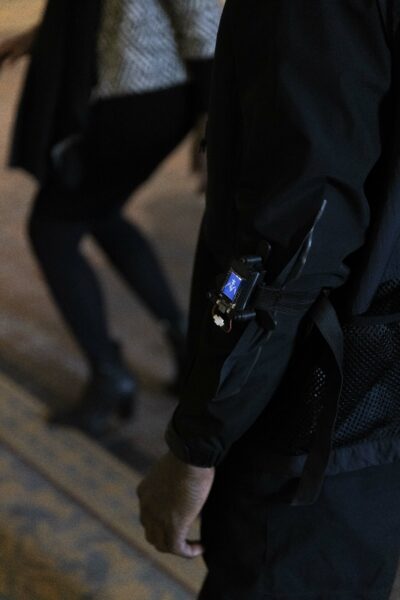
On the Day 1, we explored the topic of Confluence: the ability to synchronize with an existing collective, being adaptive to the people and to the environment. Confluence is one of the main features of resilient systems. In simple terms, it’s the ability of different flows to merge in a way where the result is more than the individual parts. One flow can assimilate the other to increase its intensity or to change its direction. On the level of physical interaction, we can use confluence to learn how to deal with incoming impulses to protect our bodies but also to amplify the energy of another body.
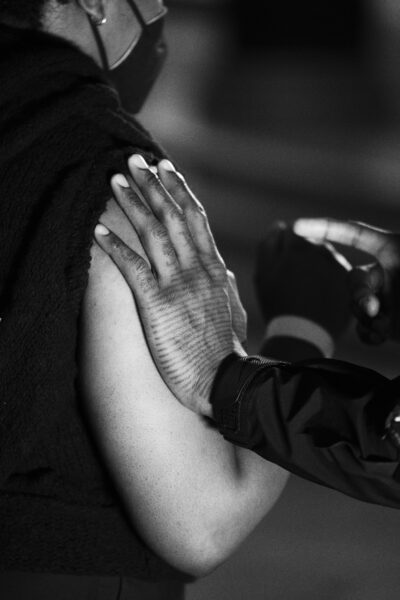
On the Day 2, we explored the concept of Inclusive Exclusivity: a set of principles based on a dynamic exchange between the periphery and the center. Certain elements are allowed a temporary period to gain influence and align more closely with the center, but they must eventually relinquish their central position and influence, creating an opportunity for others to do the same. This is one of the important features of resilient systems: their ability to renew themselves and, thus, remain adaptive to change. We propose the participants to explore these principles on physical and social levels: as individuals and as a group.
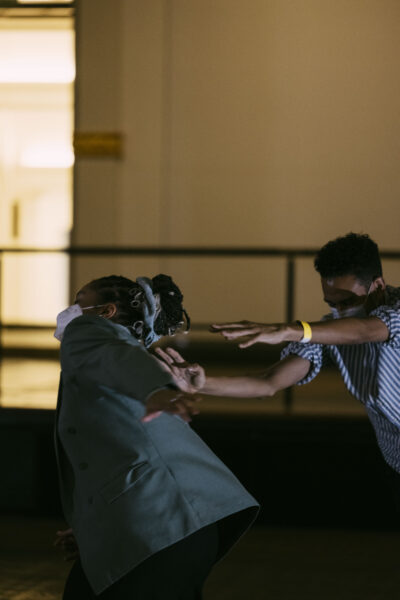
On the Day 3, we explored the concept of Regeneration: how to regenerate and recover from damage and pain. One of the basic approaches we used in EightOS is to promote modularity: a tension that arises in one part does not have to affect the other parts. Therefore, other parts stay free to make the necessary change and to escape a difficult situation. This principle, which is often used in engineering and system design, can be easily understood on the physical level and be applied in other parts of life.
Photos by Elke Walkenhorst
